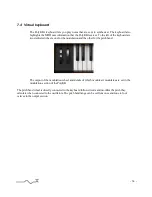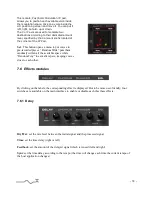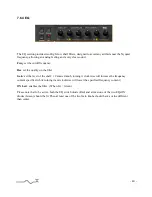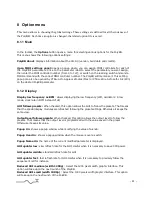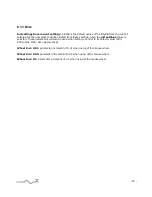
All these target parameters are detailed in the
other sections of this manual
A few tips and tricks :
You can choose to modulate the Decay of the
envelopes in arpeggios, this will give similar
results as controlling the gate parameter of the
Arpeggiator.
The envelopes can be used for inverted
modulations, which is not the case in the main
panel. You can use it to emulate some famous
vintage patches like those of the legendary
Jupiter synth.
The VCO2 only modulation option is very
helpful for Synced sounds. Try it with the mod
wheel while the OSC 2 sync is engaged.
Slight modulation of the Chorus or Phaser rate
will provide very subtle modulations, and might
prove to be very useful for all ensemble,
symphonic, or heavy chorus effects.
Modulating the Glide parameter will provide
crazy TeeBee patches for example.
Finally, modulating the delay times can lead to
glorious Spring Reverb like ambiances
Please note that the serigraphy (the little lines, wich can cross themselves, on the Gui for the
Dropdown Modulation Matrix) will indicate you the different paths which rely the sources and
destinations.
Finally, The two knobs located under pressure are used to specify the amount of modulation used by
the sources in their respective rows to modulate their destinations.
Please note that here again the green and red diodes are used to specify positive or negative
modulations :
The switches have three states allowing positive (Green Led On) or negative (Red Led On)
modulation. When no diode is lit, either green or red, no modulation occurs, and the path between
the source and the destination is broken. ( Which is the default state of the switches )
- 27 -
Содержание PolyKB II
Страница 1: ...PolyKB II User Manual www xils lab com...






















